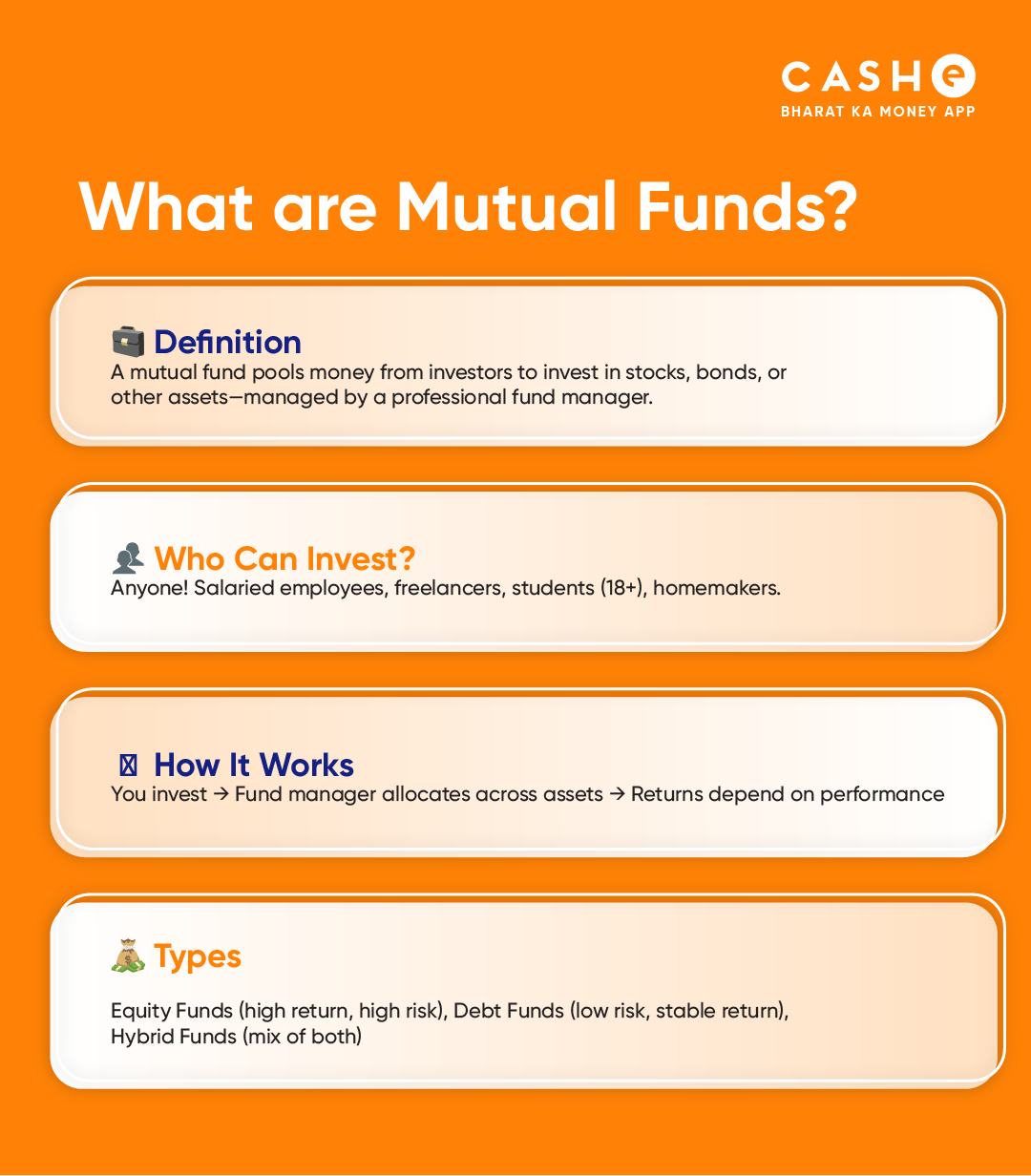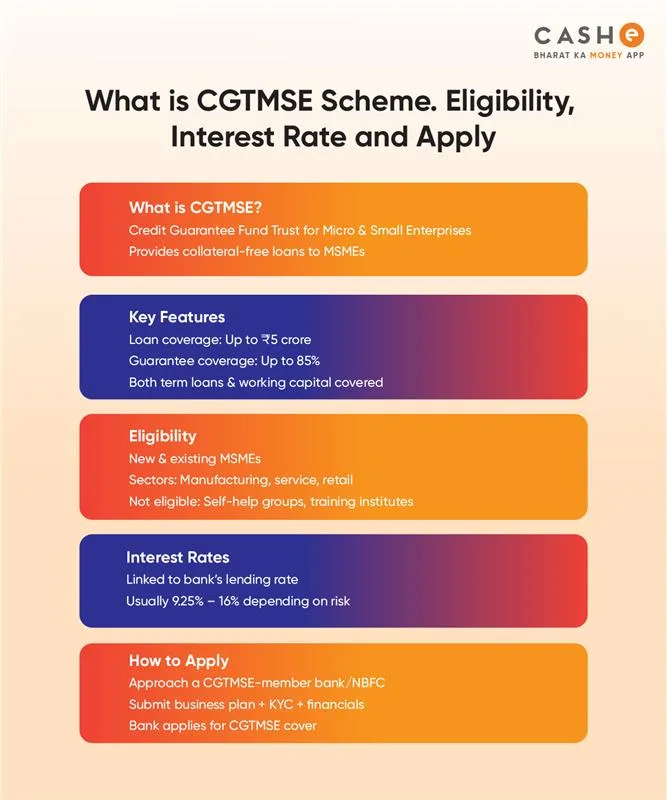You must have heard your family or friends say, “Why don’t you invest in mutual funds?” But what are mutual funds? Are they beneficial in the long run?
If you are not aware of the fundamentals of mutual funds and how they work, then here is the read for you. In this blog, we will explain how you can invest in mutual funds and talk about the risks associated. Also, we would discuss how mutual funds work, different types of mutual funds and more.
What are Mutual Funds?
Coming to basics first – the meaning of mutual funds!
A mutual fund refers to a pool of money collected from many investors. This money is then invested in stocks, bonds or other assets by professional fund managers. In other words, mutual funds allow you to invest in a variety of financial products without managing them yourself. Here, you buy units of a mutual fund and the value of these units may increase or decrease, depending on the market conditions. In the end, you earn a profit or face a loss based on how your funds perform.
How do Mutual Funds Work?
The mechanism of mutual funds is quite simple and easy to understand. Let’s break it into steps for better clarity:
Step 1: You and many other people invest money in a mutual fund.
Step 2: A fund manager uses that pooled money to buy shares, bonds or other financial assets.
Step 3: The returns are shared among all investors based on how much they invested.
The best part of mutual fund investment is that you do not need to manage the account yourself. There are professionals known as fund managers who handle it on your behalf.
Indian Mutual Fund History
- Mutual funds in India started their journey in 1963 with the formation of the Unit Trust of India (UTI).
- In 1987, public sector banks like SBI and Canara Bank launched their own funds.
- Private and international players entered the space in the 1990s.
- SEBI (Securities and Exchange Board of India) now regulates mutual funds to protect investors.
- Today, India has more than ₹50 lakh crore worth of assets under mutual fund management.

Benefits & Features of Mutual Funds
| Features and Benefits | Details |
| Professional management | You have experts handling your investments for you. |
| Diversification | Your money is spread across various assets for low risk. |
| Affordability | You can start a mutual fund SIP for as low as ₹500 |
| Liquidity | Apart from locked-in ELSS funds, you can withdraw your money easily. |
| Tax Benefits | Under section 80, ELSS funds allow you to make a deduction of up to ₹1.5 lakh per year. |
| Transparency | You can always review and track your fund’s performance. |
Objectives of a Mutual Fund
The goals of a mutual depend on its type. However, some common objectives of a mutual fund are:
- Allow capital growth and increase your wealth over time.
- Provide regular income through dividends or interest.
- Keep your funds safe and earn returns on them.
- Save taxes through ELSS mutual funds.
Types of Mutual Funds
There are many different types of mutual funds based on investment goals and asset types. The major ones include:
1. Equity Mutual Funds: Here, you invest in company shares. Though the risk is high, the return potential is also high.
2. Debt Mutual Funds: You invest in government bonds or corporate debt. It has a low to moderate risk with stable and decent returns.
3. Hybrid Mutual Funds: As the name suggests, it is a mix of equity and debt and offers balanced risk and return.
4. ELSS Funds (Equity Linked Savings Scheme): These are equity funds with a 3-year lock-in period and also offer tax benefits under section 80C. Here, you are eligible for a deduction of up to ₹1.5 lakh per year.
5. Index Funds: Invest in stock market indices like Nifty or Sensex. It has low costs and offers passive investment.
6. Liquid Funds: These funds are for those who are looking for short-term investments for emergencies. Here, the risk is low, and these funds offer instant withdrawal.
Modes of Investing in Mutual Funds
You can invest in mutual funds through the following modes:
- Lump Sum: It is a one-time investment of a large amount.
- SIP (Systematic Investment Plan): Here, you pay fixed amounts regularly. It could be monthly or quarterly.
Mutual Fund Example
Here is an example for you to understand mutual funds clearly:
Suppose you have ₹50,000 and you have no idea which company shares to buy to grow the money. Now, instead of investing the entire amount in a single company, you invest it in a mutual fund. In the mutual fund, money will be collected from many people like you, and it will be invested in shares of numerous top Indian companies. The fund will be handled by a professional manager. Now, over the next year, assuming that the market performs well and your investment grows to ₹56,000, you will earn a profit of ₹6,000 on it.
Keep in mind that if the market goes down, your profit might also decrease.
How to Invest in Mutual Funds
Here is the process to follow to invest in mutual funds:
Step 1: Define your goal and understand if it is for retirement, buying a home or tax savings.
Step 2: Check how much risk you can take.
Step 3: Open an account with a financial institution or a stockbroker.
Step 4: Complete KYC (Know Your Customer) by submitting PAN, Aadhaar and other basic documents.
Step 5: Choose the right type of fund based on goals and risk.
Step 6: Select the mode of investment: lump sum or SIP.
Step 7: Track and review your fund’s performance.
How are Returns Calculated for Mutual Funds?
Mutual fund returns are usually shown as CAGR (Compound Annual Growth Rate) or absolute return.
Example: If you invest ₹1,00,000 and after 3 years, it becomes ₹1,30,000, then your absolute return is 30%. However, as per the CAGR formula, it is roughly 9.14% per year.
Note: You can use online mutual fund return calculators for easy calculations.
Mutual Fund Investment Fees And Charges
When you invest in mutual funds, there are certain fees & charges you are often required to pay. These charges may include:
| Fee/Charge | What It Means | Amount |
| Expense Ratio | The annual fee you pay to the company for fund management. | Ideal expense ratio ranges between 0.50% to 0.75% |
| Exit Load | The Charge you pay when you sell mutual fund units before the specified period. | 0% to 2% |
| Transaction Fee | A one-time fee you pay when your investment is more than ₹10,000. | ₹100 to ₹150 |
| Fund Manager Fee | A part of the Expense Ratio paid to the fund manager. | Included in the Expense Ratio |
Conclusion
Mutual funds definitely make for one of the best ways to grow your money without having to keep track of it actively. Your money and your account – everything is managed by a professional. Whether you are saving for the future or your child’s, mutual funds are a great option to invest in. However, make sure you start small and stay consistent.
Talking of investment, you can also grow your money by buying digital gold. CASHe offers digital gold purchases via the CASHe app. Download the app and start your investments today. With CASHe, you can buy 99.99% 24K digital gold for as little as ₹1. You can also exchange it later for jewellery and gold coins.











